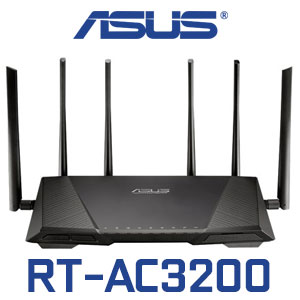About a year ago, I covered my home lab v3.0 configuration. While I am happy with the configuration, I have been having issues with my ASUS RT-AC3200. In this post, I would like to cover those issues. Read on to learn more!

Past Configurations
I have gone through a variety of different routers in my lifetime, but typically I opted to leverage the gear that my ISP provided. Sometimes, I would only use the gear provided. Sometimes, I would add my own router in front of the ISP provided gear. In all cases, I was disappointed with the configuration for some reason.
Here are some of the issues I experienced:
- ISP gear came with no support — sure you could call technical support, but they were unable to assist
- ISP gear died on more than one occasion — sure, hardware problems happen, but I have never had to replace networking gear I personally purchases. In contrast, every piece of ISP gear I have used I had to replace at least once.
- Performance was awful or unreliable — this was not matter what settings I adjusted and after reading all documentation and forums available
- I was constantly paying to lease ISP gear — this was not cost-effective
Current Configuration
When I moved into my new house just over a year ago, I decided to change this up in the following ways:
- I decided to purchase my own gear and not use any ISP gear
- I opted to go with a high-end, consumer router the ASUS RT-AC3200
- I decided to battery back up all of my networking gear to ensure I had Internet during power outages — primarily driven by me running my blog out of my house
With this configuration, I achieved the following benefits:
- I became responsible for all the networking equipment
- I could save money over the long-term
- I reduced the likelihood of my IP address changing during power outages
I should note, that I was forced to put the router in my basement to ensure battery back up — this will become important later.
ASUS RT-AC3200
Next, I would like to talk about my decision to go with the ASUS RT-AC3200 router. I did A LOT of research before opting for this router. Here were some of the reasons why I made this decision:
- I am a firm believer in you get what you pay for — of course, sometimes you pay for marketing or aesthetics. I would not compare high-end, consumer routers with something like a Macbook Pro so I was not too concerned about the latter.
- I care about some of the more advanced features including VPN, DHCP configuration, static routes, DMZ, guest accounts, separating of 2GHz from 5GHz and more. Now in the high-end, consumer router market, most of these come by default
- I have been disappointed by Netgear, Belkin, and others in the past — I have friends who have ASUS routers and have been happy with them
Initially, I was very happy with the investment. The device was easy to configure, offered a variety of mobile applications and offered every features I wanted except for DNS — luckily I have a Synology, which can handle this part.
Shortly after I had everything set up, I started experiencing issues. Here are some of the issues I experienced:
- The router completely locked up and became unresponsive requiring a hard reboot to bring it back up
- The CPU and/or memory would spike intermittently resulting in significant packet loss and sometimes requiring a hard reboot to fix the issue
- WiFi on phones connected, but often did not allow applications such as Facebook to load
- WiFi phone calls often disconnected or dropped off
I tried every configuration option I could think of to fix the issue:
- Factory defaults
- Reducing radios from three all the way to one
- Enabling QoS
- Changing advanced parameters based on Internet research
NOTE: The documentation for many of the advanced features is lacking.
Of course, I checked the logs, but they did not contain any useful information. I also upgraded to the latest firmware, but still the issues persisted. The issue was so bad, that I had to increase my phone plan’s data three times…
ASUS RP-AC56
My last attempt to fix my ASUS RT-AC3200 problems was to purchase an ASUS RP-AC56. My reasons for this were two-fold:
- I thought the issue may be caused by the ASUS RT-AC3200 being in the basement
- I could not move my ASUS RT-AC3200 as I wanted the battery backup
I installed the ASUS RP-AC56 on the top floor of my house, furthest away from the ASUS RT-AC3200 in the basement. Ideally, I wanted the SSID between the RT-AC3200 and the RP-AC56 to be the same given that ASUS supported seamlessly switching between devices based on signal strength. What I found is that the signal of both devices were similar enough that the transition never happened. I looked into adjust the sensitivity of the switch and learned that I could not reduce it to the level required.
Even using a different SSID did not appear to help. For whatever reason, the RP-AC56 kept disconnecting — from what I could tell, the RT-AC3200 did not like the RP-AC56.
Summary
After multiple attempts to deal with the issues with my ASUS RT-AC3200, it was time to make a change. In my next post, I will cover what I decided to do.
© 2016, Steve Flanders. All rights reserved.
